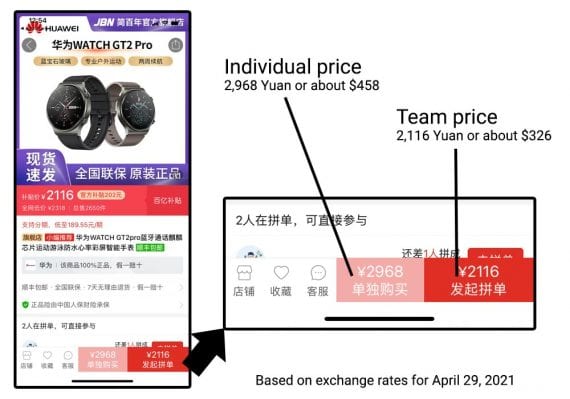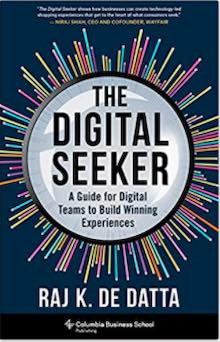The problems with gender and racial income disparity have only been magnified by the economic and social impact of the pandemic. Potential customers are becoming increasingly aware of the social challenges that people of all sorts of backgrounds, philosophies, and ethnicities are facing.
Diversity is a win-win
- Diversify your team
- Perform market research
- Let your customers’ voices be heard
3 ways to incorporate diversity into your marketing strategies
White males dominate the workforce
Claiming to be diverse and inclusive does not mean your brand will be perceived as such by your audience.
Before we get into how to diversify your team, let’s start out with some stats behind it.
1. Start by diversifying your team
The importance of thorough market research is only increasing as social awareness spreads. If you intend to connect to people with specific beliefs and backgrounds, you must build relevant marketing strategies, and the only way to do this is to study the data with an unbiased eye.
This has become even worse since the pandemic hit. According to Freshbooks’ most recent Women in the Independent Workforce survey, industries with predominantly female-owned businesses have been among the hardest hit by COVID-19, to the point that businesses owned by women are taking three times as long, on average, to financially recover when compared to businesses owned by men.
Although the words ‘inclusion’ and ‘diversity’ create the image of an umbrella covering a wide audience, efforts to diversify marketing strategies must be fine-tuned to target very specific audiences and meet them in the places where they will come into contact with your brand. There are many ways to help your brand begin to effectively embrace the diversity that has gone unnoticed and underappreciated. In this post, we’ll cover three of them:
Instead of adapting current brand messaging, marketing agencies should choose organic messaging and imagery that is created to be welcoming, target-specific, and attractive.
Do not ignore new information in favor of conventional methods of marketing—now is your time to stand out.
Here are three ways to create visibility and representation within your brand.
Business in the United States is largely dominated by Caucasian males, which bars many women and people of color from making a comparable income.
Creating visibility and representation not only has a major impact on how potential clients see a company when choosing where to invest their money, but it also is the key to higher conversion rates.
It has become increasingly important that a company is socially aware and willing to include minorities and other groups of people that have, in the past, not typically been included in advertising. This is especially true as online marketing through social media continues to become more streamlined in targeting specific (and potentially sensitive) demographics such as weight and marital status.
At the end of the day, let the voices of your potential and existing customers be heard. Let their language be infused into yours, so you can truly represent them and stand apart from your competitors. Making space for diversity means not just listening, but also building an awareness based on their feedback that can help your brand produce messaging that is relatable and authentic.
2. Gather your data (and listen to it!)
Practices to become more authentic and inclusive start with the hiring process, flow into the work environment and business policies, are squeezed out through branding, and perceived by audiences through marketing and ad campaigns.
Study the data with an unbiased eye
Having a diverse marketing team can help your brand gain valuable insight into the needs of those who you are trying to reach which would otherwise be non-existent. In addition, by having a more dynamic group of people working together, creativity and expansion can unfold in a manner that is not available when you have a team that conforms to similar backgrounds and experiences.
Market research and data analytics allow you to observe positive, negative, and neutral responses to advertising and identify marketing pitfalls so you can create a relatable marketing campaign.
This also allows brands to build resilience and adaptability in a global market that sometimes changes in the blink of an eye. The more perspectives you include in your marketing strategy, the more visibility you can achieve.
It is valuable to people that they not only recognize themselves represented in advertising, but also that they see a variety of people groups reflected as well. Embracing the diversity of consumers will impact marketing from now on, and staying on the cutting edge of advertising with this in mind will allow audiences to see how brands are leading the way toward awareness and inclusivity.
3. Focus on your audience’s perception of your brand
As you can see, diversifying your team is not only favored by customers but also strengthens various aspects of your business.
Female-owned businesses are taking longer to recover from the pandemic
The majority of people in the United States feel underrepresented in media and marketing campaigns, and there is more interest in what brands are doing to address this issue given the social changes that are sweeping the nation. Because of this, diversity marketing is becoming a cornerstone through recognizing and actively including the many different groups of people that come into contact with ad campaigns.
Consumers are no longer fooled by claims to be transparent or diverse. Major industries such as tech, healthcare, and fintech still struggle with creating inclusive atmospheres in their workplaces and this shows through subliminally in their marketing assets. A brand must also be perceived as inclusive by its audience.
A diverse team attracts a diverse following, and a diverse following can give you even more insights and ideas to strengthen your initiatives.
Not only should you be asking questions about your target audience, but you should also be asking them questions directly. Without conducting surveys, focus groups, and field trials that include individuals from your diverse target market, brand messaging will fall short and may even be harmful. Brands have to go directly to the source of hyper-specific demographics in order to glean meaningful information from the data being collected.
A brand could choose all the right influencers and imagery and still lose credibility with audiences by choosing inauthentic and exclusive messaging. The art of incorporating inclusivity into your brand requires confronting your own traditional messaging by actively creating a foothold for minority groups.
Diversity in marketing is more important than ever
To be perceived as authentic, you must actually be authentic, and the truth is agencies may have to do some soul searching and redefine what diversity means from a very basic standpoint.
Approach your audience directly






